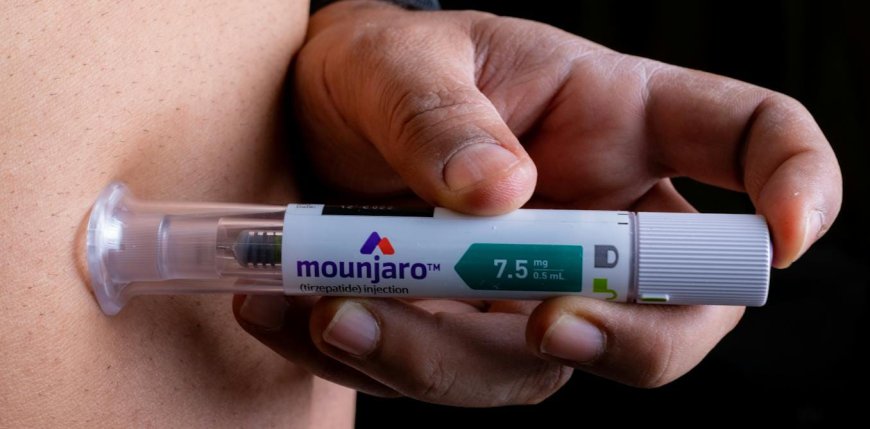Mounjaro patent information: Who owns the rights?
Explore Mounjaro injection Dubai for Type 2 Diabetes & Weight Management. Learn about cost & how this FDA-approved medication can help you.

Mounjaro Injection Dubai , also known as tirzepatide, is a groundbreaking medication developed for the treatment of obesity and type 2 diabetes. Since its approval by the U.S. Food and Drug Administration (FDA) in May 2022, Mounjaro has garnered significant attention due to its innovative mechanism of action and impressive clinical results. However, behind the commercial success of this medication lies a complex web of patent rights and ownership that plays a crucial role in its market availability and pricing. This article delves into the patent landscape surrounding Mounjaro, exploring who holds the rights and the implications for patients and healthcare providers.
Understanding Mounjaro’s Mechanism
Mounjaro works by acting as a dual agonist of the GLP-1 (glucagon-like peptide-1) and GIP (gastric inhibitory polypeptide) receptors. This dual action helps regulate blood sugar levels and promotes weight loss, making it a valuable treatment option for individuals struggling with obesity and diabetes. The efficacy of Mounjaro has been highlighted in various clinical trials, showcasing its ability to lead to significant weight loss and improved glycemic control when compared to existing treatments.
Patent Ownership and Rights
The patent landscape for Mounjaro is primarily dominated by Eli Lilly and Company, the pharmaceutical giant that developed the drug. Eli Lilly filed multiple patents covering different aspects of Mounjaro, including its composition, formulation, and methods of use. The primary patent associated with Mounjaro was filed in 2015, with the U.S. Patent and Trademark Office (USPTO) granting it a patent for tirzepatide.
Key Patents for Mounjaro
-
Composition Patents: These patents cover the specific molecular structure of tirzepatide and protect its formulation. They prevent other companies from producing generic versions of the drug or similar compounds that utilize the same mechanism of action.
-
Use Patents: Eli Lilly has also filed patents that outline the specific uses of Mounjaro in treating obesity and type 2 diabetes. These patents provide a secondary layer of protection, ensuring that competitors cannot market the drug for these indications without infringing on Eli Lilly's rights.
-
Method of Administration: Patents that describe the method of administering Mounjaro, such as dosage forms and delivery methods, also contribute to the overall patent portfolio. This helps protect the unique aspects of how Mounjaro is administered to patients.
Patent Expiration and Market Exclusivity
The exclusivity granted by patents is typically limited to a specific duration, often 20 years from the date of filing. For Mounjaro, the key patents are expected to expire in the late 2030s, after which generic manufacturers may enter the market with their formulations. This expiration will likely lead to increased competition, potentially driving down prices and improving access for patients.
In addition to patent protection, Mounjaro benefits from market exclusivity provisions granted by the FDA. As a new drug, it enjoys a period of exclusivity for its indication, which can further delay the entry of generic competitors. This exclusivity can range from three to seven years, depending on various factors such as the clinical data submitted and the nature of the drug.
Implications for Patients and Healthcare Providers
The patent ownership and market exclusivity surrounding Mounjaro have significant implications for patients and healthcare providers. As a patented medication, Mounjaro is priced at a premium compared to generics, which can be a barrier to access for many individuals, especially those without insurance coverage or high-deductible plans.
-
Access and Affordability: While Mounjaro has shown great promise in clinical trials, its high cost may limit access for those who would benefit from it. Patients may need to navigate insurance hurdles or seek financial assistance programs to afford their treatment.
-
Future Generics: As patents expire and generics become available, patients are likely to see reduced costs associated with Mounjaro-like medications. This could expand access to effective obesity and diabetes treatments, providing more options for individuals struggling with these conditions.
-
Healthcare Provider Considerations: Healthcare providers must stay informed about the patent landscape to guide their patients effectively. Understanding the implications of patent protection can help providers anticipate changes in treatment availability and cost.
Conclusion
Mounjaro, as a revolutionary treatment for obesity and type 2 diabetes, is primarily owned by Eli Lilly and Company through a series of patents that protect its composition, use, and administration. While the current patent landscape allows for exclusive marketing and high pricing, the eventual expiration of these patents is expected to facilitate competition and improve patient access to affordable alternatives.
As the healthcare landscape evolves, ongoing monitoring of patent developments will be crucial for stakeholders, including patients, providers, and policymakers. Understanding the intricacies of patent ownership will enable better decision-making regarding treatment options and access to innovative therapies like Mounjaro.
